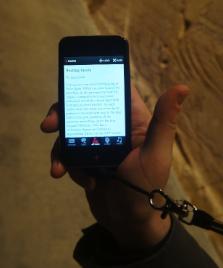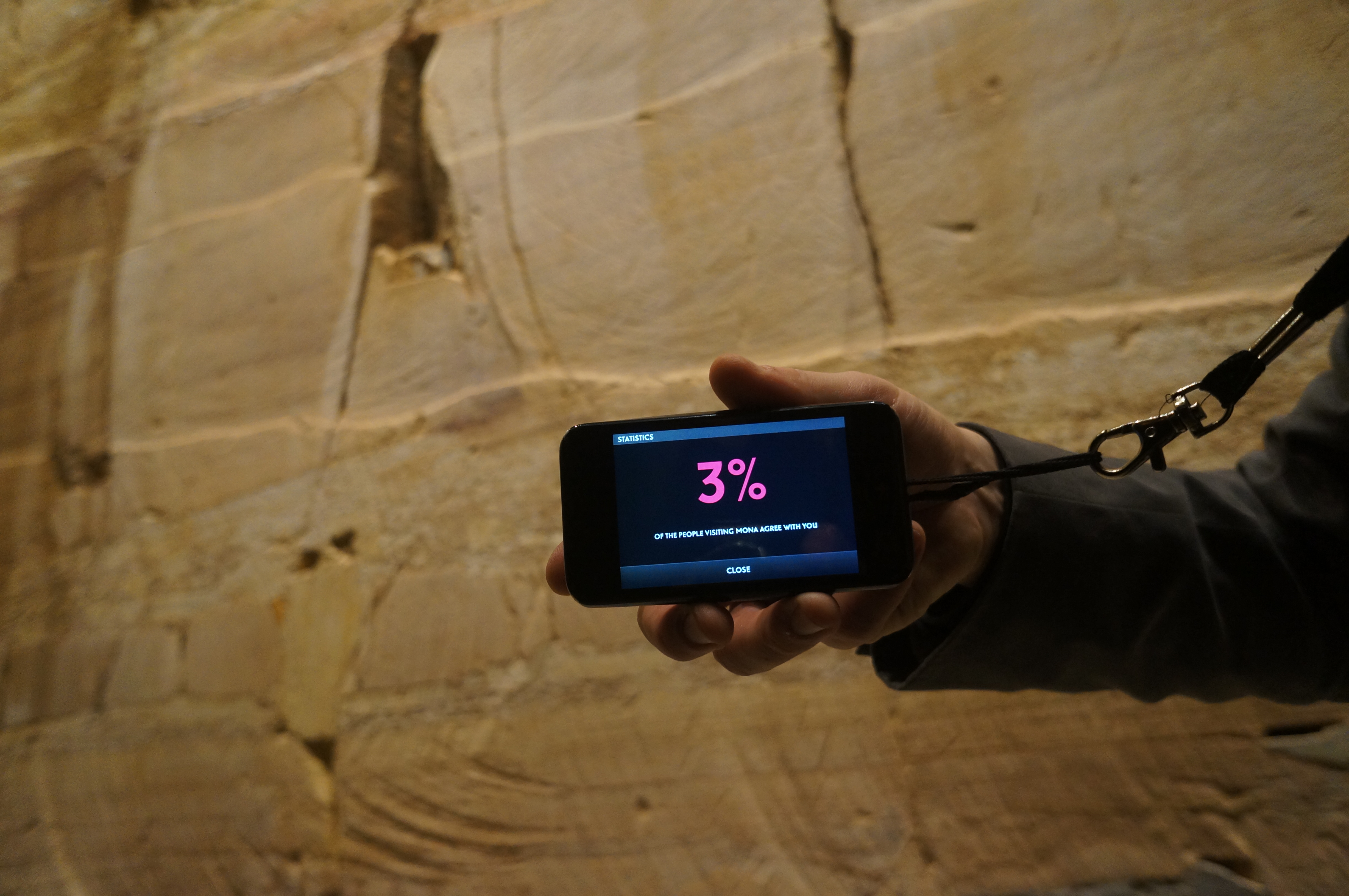If you’ve ever shared the joy of designing museum exhibits and experiences, you’ll find this refreshing…
Two months ago at the AgIdeas design conference in Melbourne, I mentioned to fellow speakers of my desire to take a side trip to Tasmania, as it would perhaps be the southernmost point a Berman has been (tracing back to Adam!). All the Aussies declared that if I visit Tasmania, I must visit Mona. Turns out Mona’s not a person: rather it’s the recently completed Museum of Old and New Art, Australia’s largest private art collection.
MONA has become the number one attraction in Tasmania. The locals find it controversial: much of the art is a bit shocking. It’s owned by unlikely art collector David Walsh, who from his humble beginnings in a working class neighborhood of Hobart, Tasmania, leveraged a minor case of childhood autism into an algorithm to outsmart online horse race gambling websites, yielding a multimillion dollar fortune. He then invested his fortune to design this remarkable museum on the side of a Hobart cliff.
I had the good fortune of getting a private tour of the museum before opening hours (once they realized that I blog for davidberman.com! 🙂 ).

The Museum of Old and New Art team lend their visitors an ingeniously-designed “O device” that gives them information on the artwork.
The museum is full of exhibit design innovation: Walsh doesn’t like to have any of the art labelled (he wants you impressed with the work, not with who created it). Instead, museum staffers hang an iPod called an “O device” around your neck that runs a dedicated app detecting where you are in the museum. It then invites you to read about the pieces around you, Like or Unlike objects, and read curator notes and the museum owner’s often irreverent comments and stories about his acquisitions. Then, because you can’t possibly take this all in within your time at the museum, the app e-mails you a customized link to a gorgeously designed website where once back home you can retrace your steps, and virtually experience exhibits you had missed.
David gives feedback on his “O device” about the artwork displayed
In my next installment I’ll tell you about the remarkable exhibit design I experienced there (especially the water typography). However, in general, much of the art at MONA is about death and dying (including a very shocking first-person simulation of what it’s like to receive a lethal injection). And perhaps the most lasting of these is the option to be entombed along with David Walsh’s father and other major donors within one of the exhibits. I must admit that there is an appeal to have one’s remains stored forever surrounded by amazing experience design, while in support of such a remarkably personable and frank approach to public art appreciation.

One of art pieces displayed at MONA: Kryptos (2008 to 2010) by Brigita Ozolins (born Melbourne, Australia, 1954; lives and works in Hobart, Tasmania)
If you would indeed like to spend more time at the MONA than you will anywhere else, sign up to be buried there (a “small” donation … at least A$75,000 is requested).
Meanwhile, continue to leave this legacy: use design to leave the world a little better than when you found it. Don’t just do good design, do good!
Images appear courtesy of MONA, Museum of Old and New Art, Hobart, Tasmania, Australia and the artists.
Reviewed September 7, 2012
